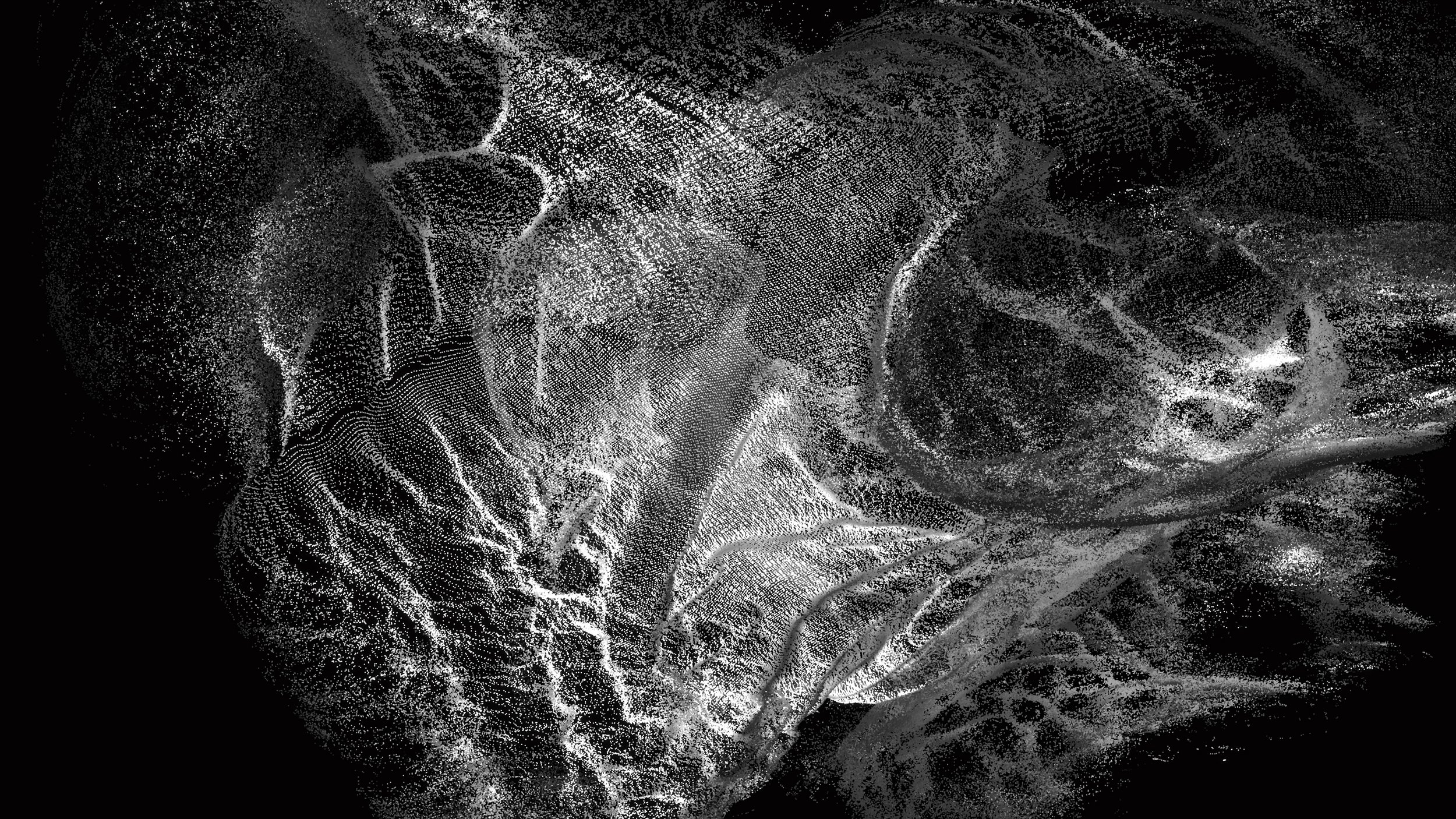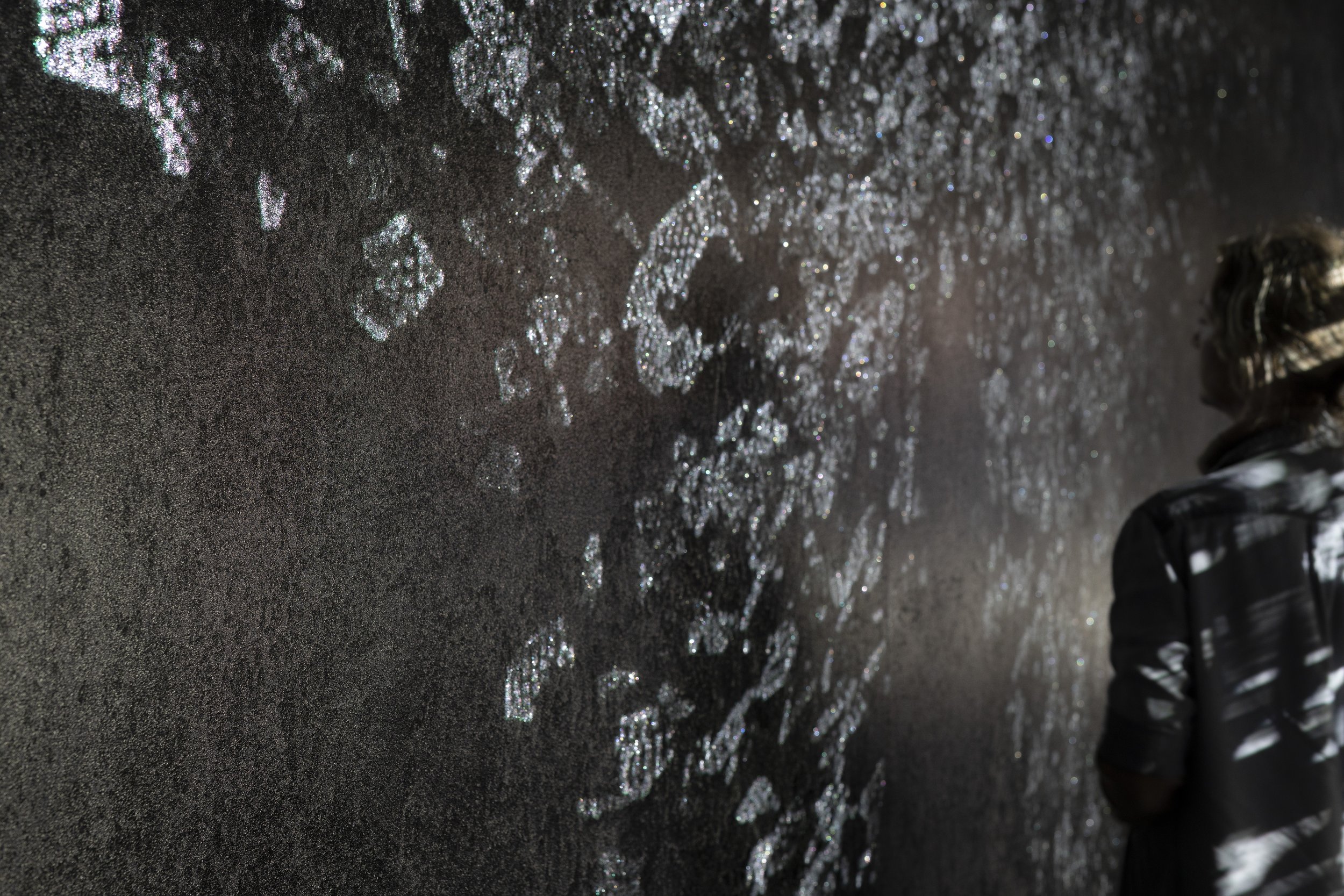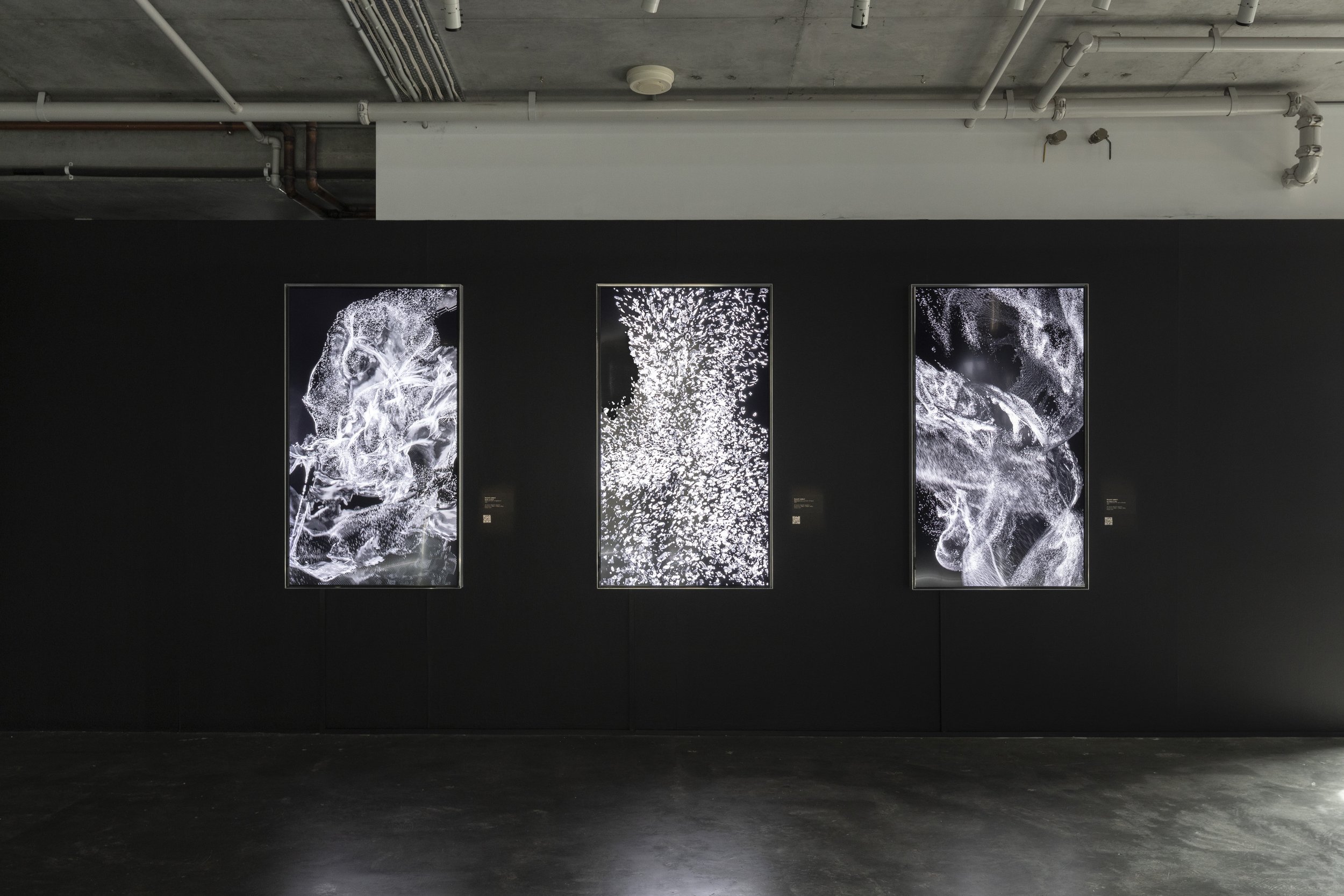KENNETH LAMBERT
’STASIS’
17 APRIL–12 MAY, 2023
Kenneth Lambert, Burden of Proof (data portrait of Magdalene) (video still), 2023, 2160 x 3840 px. Image courtesy of the artist.
ID: An abstract image of a mass of small white dots on a black background. In certain sections towards the centre and right of the image, the white dots are concentrated, positioned close together. In areas between these sections, the dots are positioned further apart. Read as a whole, the positioning and relative sizes of the dots conjures the effect of movement.
ARTIST STATEMENT
Stasis aims to be a meaningful examination of the circumstances faced by refugees and asylum seeker youths in Australia. By shedding light on the realities of displacement and prolonged detention endured by vulnerable individuals and their communities, Lambert endeavours to create empathetic experiences from disintegrated interview material. Through a series of data portraits and immersive presentation, the artist encourages viewers to contemplate the human condition through technology.
This project was created in collaboration with STARTTS and supported by Amnesty International and Australia for UNHCR.
Stasis was made possible through the support of Create NSW and the Australia Council for the Arts.
Two public programs will sit alongside this exhibition: Open Circle and Synthetic Discord Panel Discussion.
Kenneth Lambert, Stasis, 2023. Installation View. Photography by Jessica Maurer.
ID: This is a wide shot of a corner of a dark gallery room. There is a black wall starting from the left of the image following inwards to the middle, with three vertical screens installed on them. In the middle of the image there is steel construction on a window with sunlight coming through. To the right of the image there is a suspended angled black wall with one vertical screen installed onto it. All the screens have an abstract image of a mass of small white dots on a black background. Below the walls is a grey concrete flooring with white sunlight peeping through the window onto the floor in the far middle of the image.
SIGNAL TO NOISE
Now, more than ever, we are the data that represents us…
In the modern era, increasingly defined by the ubiquity of surveillance, Stasis offers a timely reflection on the implications of this phenomenon for individuals and societies alike. By personal interviews and recontextualising these experiences of asylum seekers and refugees in Australia, Lambert's work invites viewers to consider how the growing pervasiveness of data collection, anonymisation, and migration impacts the most vulnerable among us, as well as the extent to which we, as a society, have become complicit in this invasive gaze.
Travis Rice, Curator and Futurist
Kenneth Lambert, Stasis, 2023. Detailed shot. Photography by Jessica Maurer.
ID: There is a woman with blonde hair, a black scarf and blue long sleeve shirt, staring at a wall on the right of the image. The wall is covered with white, blue and yellow projected dots and abstract forms, on a black glittery background. The projection also is obstructed by the woman, partially having the projection on her.
THE POSSIBILITY OF MOVEMENT
Art can take us closer to the lived experience of those who have suffered the consequences of repressive regimes, (yes, our own government is one such regime). Art can do this, somewhat paradoxically, because it simultaneously distances us from full horrors of those experiences. In art we can find compassion, a means to understand suffering without feeling overwhelmed by it. Or, to phase that slightly differently, art can take us closer to suffering while keeping intact our ability to respond with clarity and a deep sense of connectedness to our fellow human beings.
Compassionate art is a balance of sensitivity and sensibility. The task of the artist is to find the fragment, or the level of abstraction, that can still affect us deeply because it touches on aspects of our shared humanity. Part of the power of abstraction is in the way that it plays with recognition while also opening space for the image to be interpreted in ways that wouldn’t be possible if it were rendered realistically. These are some of the dimensions of the artistic sensibility Kenneth Lambert shares with his subjects and the audience in his work Stasis. Together these decisions can give us the space for reflection. This reflection on the causes of suffering are part of a compassionate response. Such reflections are necessary. Without reflection we run the risk of turning suffering into spectacle.
Ben Denham
Kenneth Lambert, Stasis, 2023. Installation View. Photography by Jessica Maurer.
ID: This image has three vertical screens across a black wall, all the screens have an abstract image of a mass of small white dots on a black background. Next to each screen there is a small text and a QR code lit by warm yellow lighting. Below the walls is a grey concrete flooring with reflections of the light from the screen on them. Above the wall there is a white ceiling with white plumbing piping across the top of the ceiling.
WHY ARE STARTTS SUPPORTIVE OF STASIS?
Stasis, through its artistic processes of creating an abstracted digital image from the interview, allows the participants to share their stories on a significant platform whilst retaining the option of anonymity. They can benefit personally from the process of narration and witnessing, breaking the silence of the trauma whilst also protecting their family and community from danger. It is not the opinion of STARTTS that every survivor of torture and refugee trauma would feel ready to participate in Stasis. However, some likely individuals would benefit from sharing their stories anonymously in this unique art form. Participants may wish to identify themselves, which should also be supported.
Joshua Hall
Clinical Psychologist, STARTTS (NSW Service for the Treatment and Rehabilitation of Torture and Trauma Survivors)
Kenneth Lambert, Stasis, 2023. Installation View. Photography by Jessica Maurer.
ID: This is a wide shot of a corner of a dark gallery room. There is a suspended black wall starting from the left of the image following inwards to the middle, with two vertical screens installed on them. In the middle of the image there is a gap with a white back of a desk, with a concrete grey wall behind it. To the right of the image there is a suspended angled black wall with two vertical screen installed onto it. All the screens have an abstract image of a mass of small white dots on a black background. Below the walls is a grey concrete flooring with reflections of the images onto the floor.






